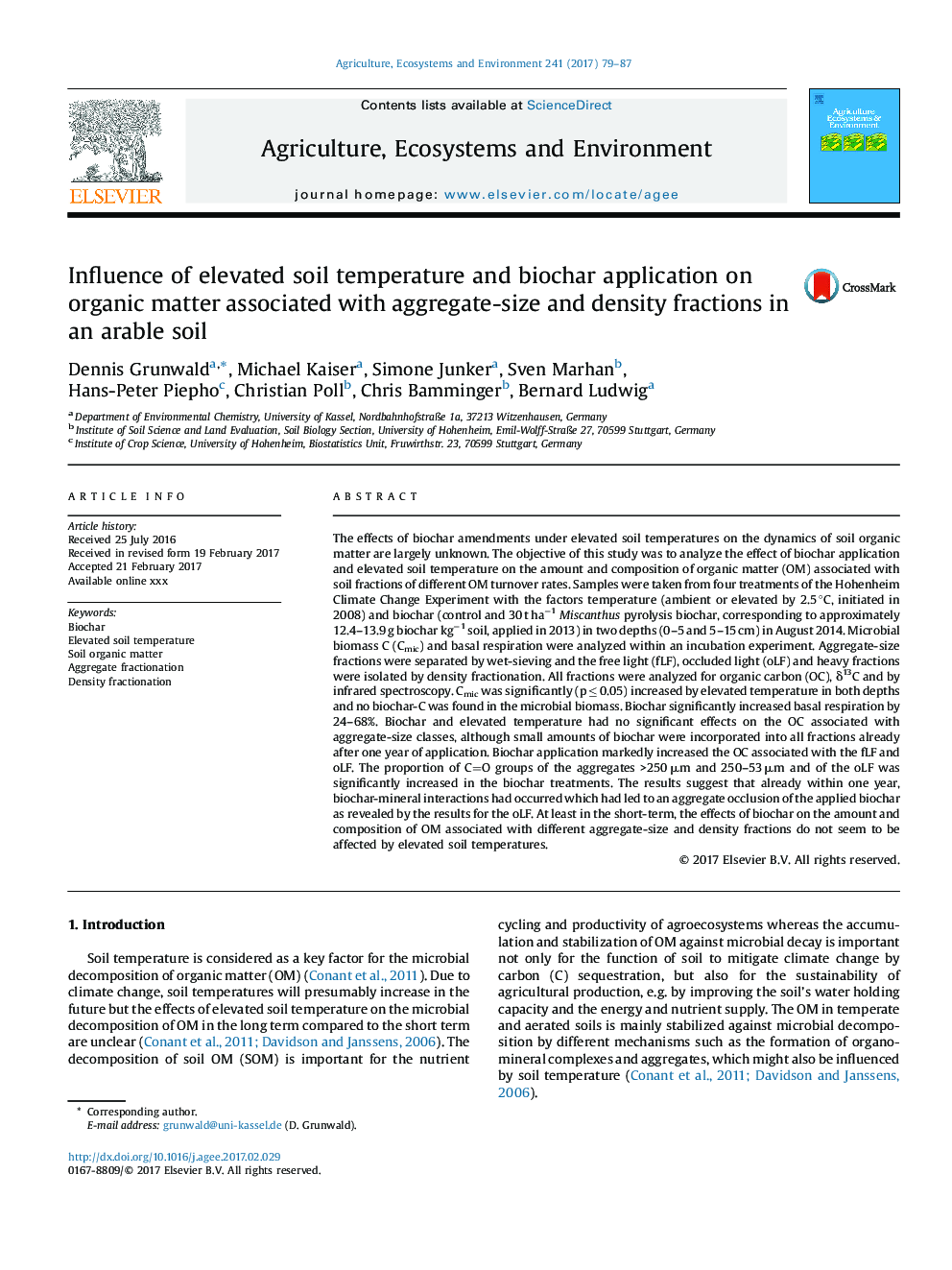| Article ID | Journal | Published Year | Pages | File Type |
|---|---|---|---|---|
| 5538259 | Agriculture, Ecosystems & Environment | 2017 | 9 Pages |
Abstract
The effects of biochar amendments under elevated soil temperatures on the dynamics of soil organic matter are largely unknown. The objective of this study was to analyze the effect of biochar application and elevated soil temperature on the amount and composition of organic matter (OM) associated with soil fractions of different OM turnover rates. Samples were taken from four treatments of the Hohenheim Climate Change Experiment with the factors temperature (ambient or elevated by 2.5 °C, initiated in 2008) and biochar (control and 30 t haâ1Miscanthus pyrolysis biochar, corresponding to approximately 12.4-13.9 g biochar kgâ1 soil, applied in 2013) in two depths (0-5 and 5-15 cm) in August 2014. Microbial biomass C (Cmic) and basal respiration were analyzed within an incubation experiment. Aggregate-size fractions were separated by wet-sieving and the free light (fLF), occluded light (oLF) and heavy fractions were isolated by density fractionation. All fractions were analyzed for organic carbon (OC), δ13C and by infrared spectroscopy. Cmic was significantly (p â¤Â 0.05) increased by elevated temperature in both depths and no biochar-C was found in the microbial biomass. Biochar significantly increased basal respiration by 24-68%. Biochar and elevated temperature had no significant effects on the OC associated with aggregate-size classes, although small amounts of biochar were incorporated into all fractions already after one year of application. Biochar application markedly increased the OC associated with the fLF and oLF. The proportion of CO groups of the aggregates >250 μm and 250-53 μm and of the oLF was significantly increased in the biochar treatments. The results suggest that already within one year, biochar-mineral interactions had occurred which had led to an aggregate occlusion of the applied biochar as revealed by the results for the oLF. At least in the short-term, the effects of biochar on the amount and composition of OM associated with different aggregate-size and density fractions do not seem to be affected by elevated soil temperatures.
Related Topics
Life Sciences
Agricultural and Biological Sciences
Agronomy and Crop Science
Authors
Dennis Grunwald, Michael Kaiser, Simone Junker, Sven Marhan, Hans-Peter Piepho, Christian Poll, Chris Bamminger, Bernard Ludwig,
